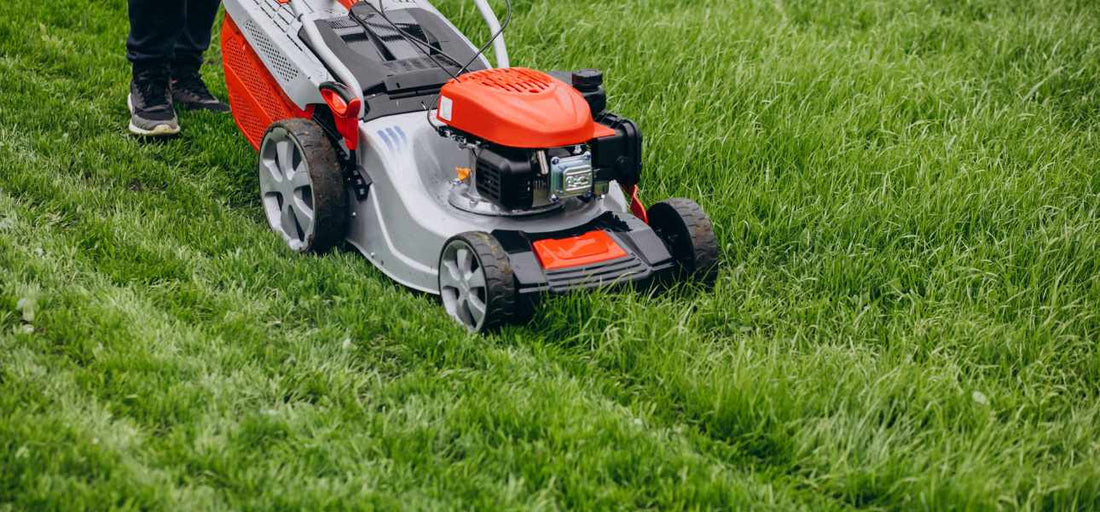
How to Mow an Overgrown Lawn
Jamie TedderWhether you've gone away for a long weekend or skipped a few mows after getting lazy, it's time to address an overgrown lawn.
However, there are a few things to know before taking out the lawn mower.
Why Bother Mowing Long Grass
From establishing a lawn from grass sod to fertilizing, watering, and mowing, maintaining a well-groomed lawn can be challenging—but the benefits make it worthwhile. Besides keeping it from becoming an eyesore, mowing your lawn at an ideal height promotes healthy and dense growth. It also aids in pest control by preventing pests from finding refuge in your lawn.
Regular mowing also helps prevent thatch development by promoting a uniform grass height, which allows the grass blades to better absorb sunlight, water, and nutrients from the soil. Having shorter grass also provides better visibility, allowing you to detect potential issues like fungal diseases early on.
Mowing Your Lawn Based on the One-Third Rule
The key principle in mowing is to adhere to the one-third rule, where you should cut only a third of the grass height during each mowing session. To cut tall grass, raise your mower blade to the highest setting and gradually work your way down. It's better to go over the landscape several times to level your grass than risk removing too much of the leaf blade simultaneously and causing scalping.
Scalping your lawn exposes the grass roots to extreme temperatures, potentially damaging them. Additionally, it induces stress and shock to the grass, slowing its growth and resulting in an uneven and patchy lawn.

Can You Use a Lawn Mower to Cut Overgrown Lawns?
While your lawn mower—whether a riding mower or push mower—may be able to cut long grass, it is not recommended to do so. Besides tearing your grass, which makes it susceptible to pests and diseases, it can also strain your mower. Choking or overheating may occur when you try to mow overgrown grass.
Instead, we advise starting with a grass trimmer or a whipper snipper before transitioning to a lawn mower once you reach your desired mowing height. After the first mow, water your lawn and allow it to recover for 2-4 days before repeating the mowing process.
Again, cutting long grass in several sessions to achieve the desired mower height will facilitate healthy grass growth without causing stress or damage to the lawn. Shift to a different direction each time to encourage straight blades of grass.
Post-Cutting Maintenance Tips & Practices to Prevent Overgrowing Your Grass
Now that your lawn is back in shape, establish a consistent mowing schedule to prevent it from becoming overgrown again. Start with a monthly schedule, adjusting it based on your lawn's growth rate and the ideal height for your grass plant.
For warm-season grasses like Bermuda, St. Augustine, and Zoysia grass, this would be anywhere from 2.5 to 3 inches. Mow during their active growth period, usually in the warmest months, from early summer through early fall.

Supplement Your Mowing Efforts with Comprehensive Lawn Care Practices
Alongside regular mowing, consider fertilizing your lawn to provide essential nutrients for optimal growth. A soil test provides insights into your soil's pH and nutrient makeup to ensure a targeted and effective fertilization strategy.
Water less often but more deeply to promote broader and deeper root growth. Remove any weeds competing with your desired grass for water, sunlight, and nutrients. Finally, address any sparse areas or damaged spots by laying sod or promoting grass plugs. These lawn care solutions facilitate faster establishment and uniform coverage, restoring the lush appearance of your lawn.
Cutting grass, particularly when overgrown, isn't as easy as pulling out your mower and getting started. By following these guidelines, you not only ensure a successful mowing session but also contribute to an overall healthy lawn with grass that is more consistent in growth, less susceptible to damage and looks great overall.
Did you find this article helpful? Let us know by leaving a comment.
